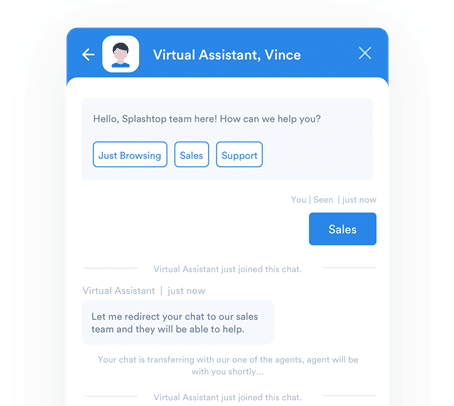There is not a single industry where artificial intelligence hasn't created a new trail. And customer experience, which is established to be a key differentiator and even an inducement for customers to pay a premium price, is no different.
In 2020, and beyond too, AI is going to have a prominent influence on customer experience — an influence that will enable businesses to deliver better customer experience without having to tear down their workflows and build new ones from scratch. For example, chatbots that have been considered a fancy addition will come to the forefront as a must-have or table stakes for businesses.
There are several other trends like these that are in the offering. Let’s take a quick look at them.
1. Chatbots for Immediate Resolution

More than 67% of consumers worldwide used a chatbot for customer support in the past year. 2020 can be rightly called the year of the chatbots. In fact, Gartner found that by 2020 85% of all customer interactions will be handled without a human agent. In other words, chatbots are going to be the way forward for elementary conversations.
Are chatbots restricted only to customer support? Not at all. The web is plush with success stories of chatbots that are able to drive up sales conversations by up to 35%.
The notable benefit of chatbots is that they are capable of driving immediate resolutions. Be it a sales-related query or one related to customer service — chatbots can provide an immediate resolution.
2. RPA for accelerated output
Robotic Process Automation (RPA), which is a smaller subset of artificial intelligence, aims to automate all repetitive and manual tasks that otherwise drain the time and energy of knowledge workers. With RPA, process workflows become accelerated, less error-prone, and have a larger chance of achieving efficiency.
But how will it help improve customer experience?
Well, erstwhile processes that took longer due to manual dependence will become less time-consuming. For example, KYC checks in banks and financial institutions can be executed in a fraction of the time taken before due to automation. Their level of accuracy will also reduce the need for corrections and document revisits. Similarly, RPA can also help customers with auto-filling of information based on their previous entries, thereby saving them time and effort.
3. Visual Recommendations for eCommerce
This is the age of personalized experiences. Customers expect businesses to provide them with contextually and personally relevant product recommendations. In eCommerce, so far, product recommendations were provided based on the customer’s previous shopping habits, search queries, and related interests.
The challenge, though, is that, for visually-dependent shopping preferences, like in clothing and fashion, the text-based approach is not sufficient. Businesses have to provide visual recommendations based on what the customer is already ‘seeing’ on their screens. Artificial intelligence, with its image recognition abilities, can scan for visually similar product suggestions that the customer might be interested in.
For example, if a customer is shopping for partywear, the AI system can recommend a matching accessory that can complete the look. This will increase the chances of an upsell and will also deliver a superior customer experience.
4. Targeted Offerings in Customer Service
One of the pains in customer service is that agents cannot always determine the query with which the customer is approaching. Sometimes, the query could be basic that can be automated with the help of a system. The time and effort of a customer rep, in such cases, is not required to address such queries.
Artificial intelligence can make a difference here. It can segment customers based on the queries they ask and route the conversations to customer service reps only if it is necessary.
For example, in a call center, the call gets routed to an agent if the query is urgent and needs immediate assistance, like blocking credit cards. Basic queries like fetching the latest balance or details of the last five transactions can be fetched with the help of an AI system.
An AI system can collect user input through interactive voice responses (IVRs) or other prompts, interact with the database, and render the output to the customer. Thus, the customer service agent would be able to spend their precious time and energy on tasks that demand their personal time and attention.
Conclusion
In a survey conducted by PwC, respondents confirmed they would leave a brand if it catered more than one negative experience. Customer experience has become a differentiator that is more powerful than price tags or offers. Millennial customers want to be treated fairly and in a just manner. They want delightful customer experiences and are willing to switch brands and, thereby, loyalty, if it is available somewhere else.
For businesses that are struggling to grasp what customers want, artificial intelligence can lend a helping hand. It arms businesses with the insights it needs to render a positive customer experience. Chatbots, visual recommendations, targeted customer service are all pointing towards that direction.




